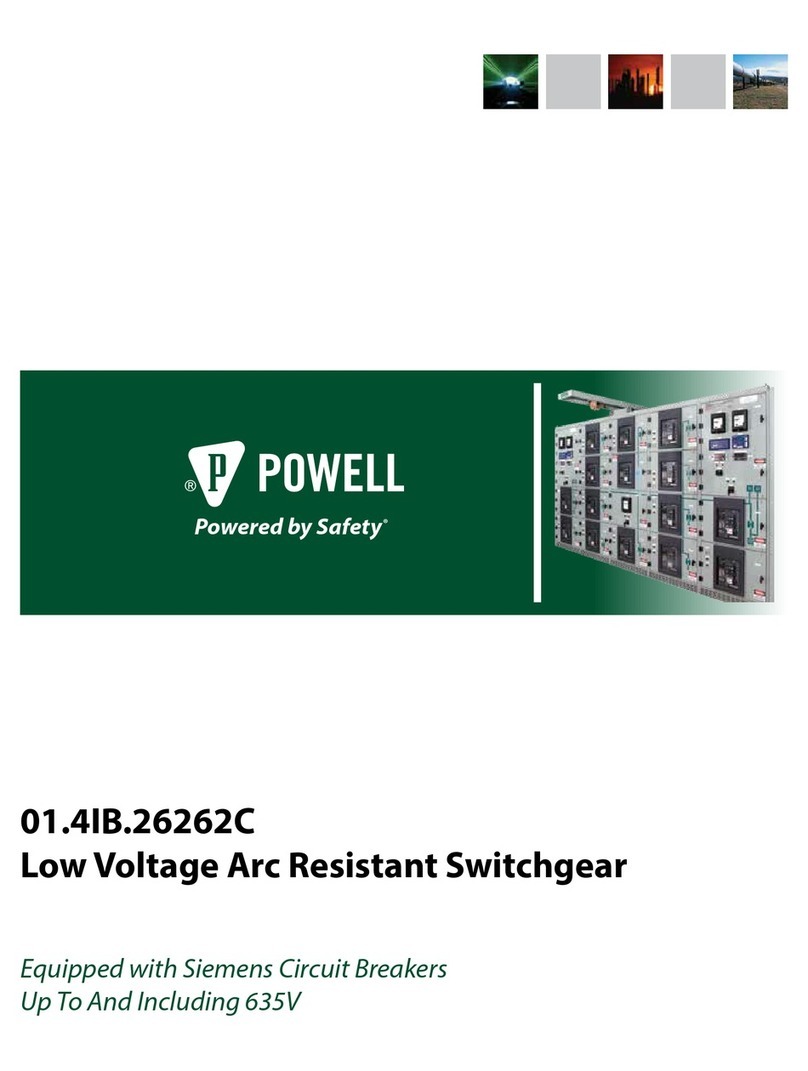
Powered by Safety®
2General Information
Low Voltage Arc Resistant Switchgear (LVSWGR-AR®)
Equipped with Magnum DS Circuit Breakers 01.4IB.26263B
A. Scope
The information in this instruction bulletin
describes Powell low voltage arc resistant
metal-enclosed switchgear assemblies
equipped with Magnum DS Low Voltage Power
Circuit Breakers. The equipment described is
indoor type switchgear for applications up to
and including 635 Volts and 4000A.
Standard construction details are provided
in the appropriate sections. The circuit
breaker element operation and maintenance
instructions can be found in the Magnum
DS operating instruction manual provided
with each circuit breaker. Any special
switchgear construction details are provided in
supplementary documentation.
B. purpoSe
The information in this instruction bulletin
is intended to provide information required
to properly operate and maintain the low
voltage arc resistant switchgear equipped with
Magnum DS circuit breakers.
This instruction bulletin provides:
1. Safety guidelines
2. General descriptions of the operation
and maintenance of the low voltage arc
resistant switchgear
3. Instructions for installation of the
switchgear
4. Information for ordering renewal parts
5. Illustrations, photographs, and description
of the switchgear. Refer to the Eaton
publication shipped with the device for
circuit breaker information.
The illustrations contained in this document
may not represent the exact construction
details of each particular type of switchgear
section. The illustrations in this document
are provided as general information to aid in
showing component locations only.
All illustrations and photos are shown using
deenergized equipment.
Follow the appropriate safety precautions
while handling any of the equipment. Failure
to do so may result in death or serious injury.
!
To the extent required, the products described
herein meet the applicable ANSI, IEEE, and
NEMA Standards; however, no such assurance
is given with respect to local codes and
ordinances which may vary greatly.
c. InStructIon BulletInS AvAIlABle electronIcAlly
Changes to the instruction bulletin may
be implemented at any time and without
notice. Go to powellind.com to ensure use
of the current instruction bulletin for Powell
equipment.
To contact the Powell Service Division call
1.800.480.7273 or 713.944.6900, or email
info@powellservice.com.
For specific questions or comments pertaining
to this instruction bulletin email
documents@powellind.com with the
Instruction Bulletin number in the subject line.






























